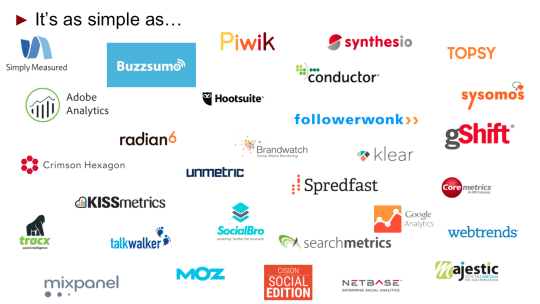
Measuring PR is a hot topic. Talk to any PR or marketing leader and they want to know which campaigns are paying off, which influencers and reporters are driving engagement, and if their agency retainer is bigger than their ROI.
The problem, of course, is that most leaders aren’t sure how to find those answers. The intention to measure PR accurately is there, but the ability often isn’t. Partly that’s because trying to quantify successful public relations components like brand affinity, media relationships and buyer engagement can be tough.

In their attempt to measure, many leaders focus on surface outputs when they should be measuring performance. (And no, they’re not the same thing.) You can recognize this because they’re guided by superficial metrics. How many impressions? How many email opens? How many hits?
Technically those numbers qualify as measurements, but they’re not especially useful when it comes to true PR performance. A magazine’s circulation doesn’t reveal its influence; the volume of media hits won’t shed any light on buyer engagement. To really understand PR performance, you need to connect your outcomes to inputs and their impact on your business objectives.
Here are four ways to ensure you’re measuring performance.
1. Collect the right data.
Bury AVEs in the metric graveyard where they belong and use smarter metrics. A media mention on its own means nothing. What about tonality? Source? Accurate message?
To put your media wins in context, create a scoring system over time that helps you quickly rate their value. For instance, you’ll know that a certain top-tier outlet doesn’t have as much impact as expected, while a lesser-known influencer drives qualified leads with every mention. And instead of coasting on misleading engagement metrics like page view counts, dig into more meaningful statistics like engagement through the article or coverage, bounce rates from the referred traffic and the time spent on site. Those measurements will tell you where you’re getting it right.
2. Follow PR through the funnel.
So that one article got shared 900 times in the first day. Great. But how many of those people then visited your site, and how many of them consumed content or signed up for a demo? The only way to really trace PR impact is to follow its trail across the finish line.
That usually means obtaining data from the company’s marketing automation tools and CRM systems. The sales team, for instance, probably documents lead origins, which can help you connect your campaigns to closed deals. Drill deep and you’ll connect the dots between media coverage, speaking engagements, social activity, website traffic and revenue. Performance doesn’t get any clearer than that.
3. Benchmark campaign performance.
This happens on every team; cheers go up when an article gets accepted by a top-tier magazine or a campaign sparks great broadcast coverage. But those wins may not necessarily indicate success if similar campaigns have gotten even better results for less effort. To really place results in context, you’ll need benchmark what it takes to get those wins. By the way, this is also the only way to scale PR success, otherwise you’re just guessing every time.
4. Connect results to company impact.
Any decent PR person can score a few wins, whether it’s top placement or low hanging fruit. It’s their job. However, if the PR program is measured by how many “hits” you get instead of landing coverage that actually moves the needle on business objectives, it’s time for a change.
This is a two-step process. PR goals must first connect to specific company goals. Then all PR efforts must be measured in terms of their impact on those goals.
Positive PR outcomes may gratify our egos, but true performance is tied to tangible ROI. By anchoring efforts to business priorities and challenges, then measuring their effectiveness as a solution, PR leaders will obtain the insight required to create smarter strategies and hone performance going forward.
Aly Saxe is founder and CEO of IrisPR. She founded Ubiquity Public Relations in 2007. You can follow Aly at: @aly_saxe
